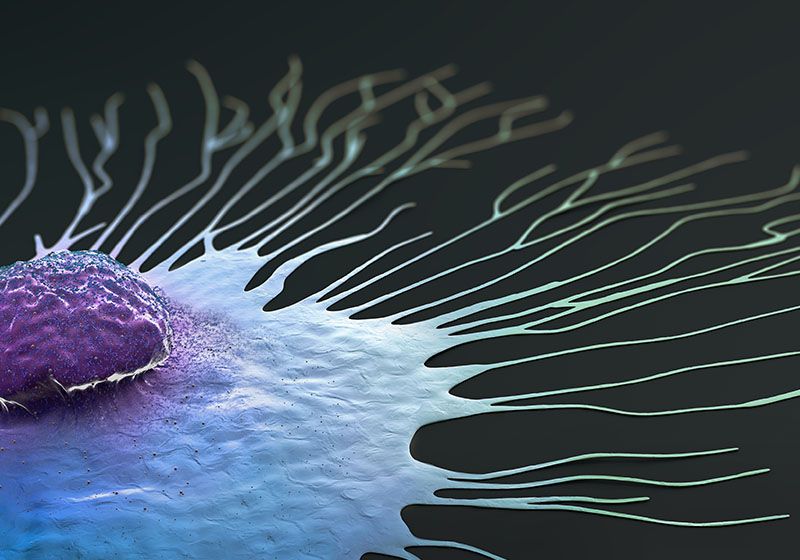Orbital Space Crystals: A Novel Approach To Drug Discovery And Improvement

Table of Contents
The Science Behind Orbital Space Crystals and Drug Development
The core principle behind orbital space crystals lies in the impact of microgravity on crystal formation. Microgravity, the state of experiencing very little or no gravity, offers unparalleled advantages over Earth-based methods for protein crystallization.
Superior Crystal Growth in Microgravity
On Earth, gravity-driven convection currents disrupt crystal growth, leading to imperfections and smaller crystals. In the microgravity environment of space, these disruptive forces are minimized. This results in several key benefits:
- Larger, more perfect crystals: The absence of convection allows for more uniform and controlled crystal growth, resulting in significantly larger and more complete crystals.
- Improved diffraction data: Higher-quality crystals provide clearer and more accurate X-ray diffraction data, essential for determining the three-dimensional structure of molecules.
- Enhanced structural analysis: The improved data leads to more precise and detailed structural analysis of proteins and other biomolecules.
- Minimized defects: The reduced convection minimizes the formation of defects within the crystals, improving the overall quality and suitability for analysis.
These improvements in crystal quality are critical for advancing pharmaceutical research, particularly in the field of protein crystallization.
Protein Crystallization and Drug Target Identification
Understanding the three-dimensional structure of proteins is paramount for drug development. High-quality crystals, such as those grown in microgravity, are crucial for determining this structure using techniques like X-ray crystallography. This allows researchers to:
- Perform detailed protein structure analysis: Reveal the intricate details of the protein's shape and interactions.
- Identify drug binding sites: Pinpoint specific regions on the protein where drugs can bind effectively.
- Enable rational drug design: Utilize the structural information to design drugs with improved efficacy and specificity.
- Improve drug efficacy: Develop drugs that bind more effectively to their target, leading to enhanced therapeutic effects.
By facilitating the precise determination of protein structures, orbital space crystals significantly accelerate the drug development pipeline, moving from target identification to drug candidate selection much faster.
Advantages of Orbital Space Crystals over Traditional Methods
The advantages of utilizing orbital space crystals for drug discovery extend beyond just improved crystal quality. The technique offers a multitude of benefits compared to traditional Earth-based methods.
Accelerated Drug Discovery
The superior crystal growth achieved in microgravity translates directly into significant time savings.
- Reduced experimental time: Faster crystal growth and data acquisition streamline the experimental process.
- Faster drug candidate identification: Improved data allows for more efficient screening of potential drug candidates.
- Faster progression through clinical trials: The increased speed of the development process translates into faster time to market.
Studies suggest that orbital space crystal growth can reduce the overall drug development timeline by several years, representing a substantial advancement in the field.
Enhanced Drug Efficacy and Safety
The enhanced quality of crystals obtained using this technique leads to more precise drug design, resulting in improved efficacy and reduced side effects.
- Improved drug-target interaction: Drugs designed based on highly accurate structural information exhibit stronger and more specific interactions with their targets.
- Reduced off-target effects: Minimizing interactions with non-target molecules lowers the likelihood of adverse reactions.
- Enhanced patient safety: Improved specificity and reduced off-target effects translate to safer and more tolerable drugs.
- Fewer adverse reactions: A more precise understanding of drug-protein interactions leads to the development of medications with fewer side effects.
This improved safety profile is critical for patient well-being and the overall success of drug development programs.
Cost-Effectiveness in the Long Run
While the initial investment in space-based experiments might be substantial, the long-term cost savings are considerable.
- Reduced research and development costs: Accelerated development reduces the overall time and resources spent on research.
- Faster time to market: Earlier market entry generates quicker revenue streams and return on investment.
- Increased return on investment: The higher success rate of drugs developed using this method improves the overall financial yield.
The reduced failure rate of clinical trials due to improved drug design further contributes to a positive return on investment.
Challenges and Future Directions of Orbital Space Crystallization
Despite the significant promise of orbital space crystals, several challenges remain.
Technological Hurdles and Solutions
Conducting experiments in space presents unique logistical and technological challenges:
- Cost: Space-based research is inherently expensive.
- Logistics: Transporting equipment and samples to space requires careful planning and coordination.
- Equipment: Specialized equipment is needed to perform experiments in a microgravity environment.
However, ongoing technological advancements are addressing these issues:
- Development of automated systems: Automated systems reduce the need for human intervention in space, lowering costs and complexity.
- Miniaturization of equipment: Smaller, lighter equipment reduces launch costs and simplifies operations.
- Improved data transmission from space: Reliable and high-speed data transmission ensures efficient data acquisition and analysis.
- Collaboration between space agencies and pharmaceutical companies: Strong partnerships are crucial for sharing resources and expertise.
Expansion of Applications
The potential applications of orbital space crystals extend beyond drug discovery:
- Development of novel materials: Superior crystal growth could lead to new materials with unique properties.
- Advanced protein engineering: Precise structural information facilitates the design of improved proteins for various applications.
- Improvement in other scientific disciplines: The technology's benefits could extend to other fields requiring high-quality crystals.
This versatility highlights the broader scientific significance of this innovative technique.
Conclusion
Orbital space crystals represent a paradigm shift in drug discovery and development. By leveraging the unique properties of microgravity, this technology offers superior crystal growth, leading to accelerated drug development, enhanced drug efficacy, and improved patient safety. While challenges remain, ongoing advancements and collaborations promise to overcome these hurdles and unlock the full potential of orbital space crystals. Explore the future of drug discovery with orbital space crystals—invest in this innovative technology for a healthier future! Learn more at [link to relevant research/organization].

Featured Posts
-
 The White House Incident Evaluating President Ramaphosas Measured Response And Other Possibilities
May 23, 2025
The White House Incident Evaluating President Ramaphosas Measured Response And Other Possibilities
May 23, 2025 -
 The Culkin Familys Financial Dilemma Mothers Struggle While Sons Enjoy Success
May 23, 2025
The Culkin Familys Financial Dilemma Mothers Struggle While Sons Enjoy Success
May 23, 2025 -
 Ing 2024 Form 20 F Financial Statements And Key Metrics
May 23, 2025
Ing 2024 Form 20 F Financial Statements And Key Metrics
May 23, 2025 -
 Kermits Commencement Address Key Takeaways For University Of Maryland Graduates
May 23, 2025
Kermits Commencement Address Key Takeaways For University Of Maryland Graduates
May 23, 2025 -
 Tutumlulukta Oende Gelen 3 Burc Paranizi Nasil Yoenetmeniz Gerektigi
May 23, 2025
Tutumlulukta Oende Gelen 3 Burc Paranizi Nasil Yoenetmeniz Gerektigi
May 23, 2025
